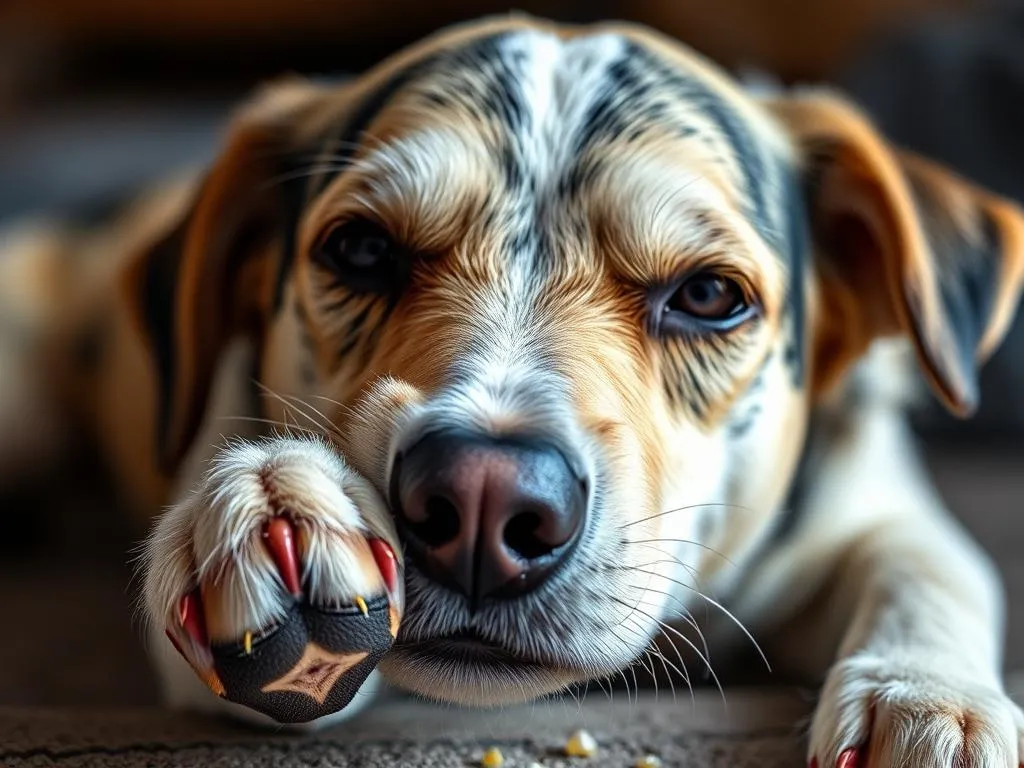
Introduction
Understanding our furry friends’ behaviors can sometimes feel like deciphering a complex code. One common concern among dog owners is why does my dog bite his nails? Nail biting in dogs can be a perplexing behavior that raises questions about their health and well-being. As owners, it’s essential to grasp the underlying reasons behind this action, as it could signify a range of issues from boredom to physical discomfort.
In this article, we aim to provide insights into the causes of nail biting in dogs, as well as practical solutions to manage and prevent this behavior. Whether you’re a new dog owner or a seasoned one, understanding your dog’s behavior is crucial for their happiness and health.
Understanding Nail Biting in Dogs
Definition of Nail Biting
Nail biting in dogs refers to the act of a dog gnawing or chewing on its own nails. This behavior can sometimes be mistaken for other actions like chewing or licking, but it has distinct characteristics. Nail biting is typically more focused and can be indicative of specific issues, rather than a general expression of anxiety or boredom.
Common Contexts for Nail Biting
Dogs may bite their nails in various situations. For instance, some dogs may engage in nail biting during moments of stress or anxiety, while others might do so when they’re bored or not receiving enough mental stimulation. Signs that often accompany nail biting include pacing, excessive licking, or changes in eating habits. Recognizing these contexts can be crucial in determining the cause behind the behavior.
Reasons Behind Nail Biting
Physical Causes
Health Issues
One of the first things to consider when asking why does my dog bite his nails is the possibility of underlying health problems. Common health issues that can lead to nail biting include:
- Allergies: Dogs can suffer from allergies that cause itching and discomfort, leading them to bite their nails as a means of relieving irritation.
- Skin Infections: Bacterial or fungal infections can make the skin around the nails sensitive, prompting dogs to bite at them.
- Nail Bed Infections: Infections specifically located at the nail bed can cause pain, leading the dog to chew on the affected area.
Pain or Discomfort
Another significant reason for nail biting in dogs is pain or discomfort. Conditions such as:
- Arthritis: Older dogs might experience joint pain that makes it uncomfortable for them to walk, leading them to focus on their nails.
- Injury to the Paw or Nails: A recent injury can cause a dog to nip at their nails in an attempt to alleviate discomfort.
Behavioral Causes
Boredom
Dogs are social creatures that require physical and mental stimulation. When they don’t receive enough exercise or interaction, they may resort to nail biting as a way to entertain themselves or relieve boredom.
Anxiety and Stress
Anxiety is a leading cause of many behavioral issues in dogs. Factors contributing to anxiety can include:
- Separation Anxiety: Dogs that experience stress when left alone may turn to nail biting as a coping mechanism.
- Fear of Loud Noises or New Environments: Sudden changes, such as moving to a new home or exposure to loud sounds, can trigger stress responses, leading to nail biting.
Habitual Behavior
Over time, nail biting can become a habitual behavior, particularly if a dog has previously engaged in it as a response to boredom or anxiety. Breaking this habit may require intervention and consistent training.
Environmental Factors
Changes in Routine
Dogs thrive on routine, and sudden changes can upset their sense of security. Whether it’s moving to a new home or changes in family dynamics, these shifts can lead to anxiety and nail biting.
Lack of Proper Care
Improper grooming can contribute to nail biting. If a dog’s nails are not regularly trimmed, they may become too long and cause discomfort, prompting the dog to chew on them to alleviate pain.
Identifying the Cause of Nail Biting
Observational Techniques
To effectively address nail biting, it’s essential to identify the cause. Owners can monitor their dog’s behavior patterns, noting when nail biting occurs and any accompanying signs. Keeping a journal of these incidents can help identify triggers and patterns, providing valuable insights into the dog’s behavior.
Consulting with a Veterinarian
If nail biting persists or worsens, consulting with a veterinarian is crucial. A professional diagnosis can uncover any underlying health issues that may be contributing to the behavior. During a vet visit, expect a thorough examination, and be prepared to discuss your dog’s history, behavior patterns, and any changes in their routine.
Solutions and Management
Medical Interventions
Treatment for Physical Conditions
If a health issue is identified as the cause of nail biting, your veterinarian may recommend various treatments, including:
- Medications: Depending on the diagnosis, your vet may prescribe antihistamines for allergies or antibiotics for infections.
- Topical Treatments: Special creams or ointments may be prescribed to soothe irritated skin around the nails.
Regular Check-Ups
Ongoing veterinary care is essential for maintaining your dog’s overall health. Regular check-ups allow for early detection and treatment of potential issues that could lead to nail biting.
Behavioral Modifications
Increasing Exercise and Stimulation
To combat boredom, increasing your dog’s physical activity is vital. Engaging in regular walks, runs, or play sessions can provide the mental and physical stimulation needed to prevent nail biting. Consider introducing:
- Interactive Toys: Puzzle toys can keep your dog entertained and mentally stimulated.
- New Activities: Try agility training or obedience classes to engage your dog in new challenges.
Training Techniques
Training can also play a significant role in reducing nail biting. Implementing commands and reinforcement strategies can help redirect your dog’s attention when they start to bite their nails. Positive reinforcement, such as treats or praise, can encourage desired behaviors.
Creating a Calm Environment
Reducing anxiety is crucial in managing nail biting. Tips for creating a calm environment include:
- Designated Safe Spaces: Create a quiet area where your dog can retreat when feeling stressed.
- Calming Products: Consider using calming collars or diffusers that release pheromones to help soothe anxious dogs.
Grooming and Nail Care
Proper grooming is essential for preventing nail biting. Regular nail trimming can help keep nails at a comfortable length. Recommended nail care products include:
- Nail Grinders: These can be gentler on the nails than traditional clippers.
- Clippers: Ensure you have a pair of high-quality clippers to avoid splitting or damaging the nails.
Preventing Nail Biting
Establishing a Routine
Creating a consistent schedule for exercise and grooming is vital. Regular physical activity can help alleviate boredom, while a grooming routine ensures your dog’s nails are kept at an appropriate length.
Environmental Enrichment
Incorporating stimulating toys and activities can help reduce boredom and anxiety. Consider:
- Interactive Toys: Toys that require problem-solving or physical interaction can keep your dog engaged.
- Playdates: Arranging playdates with other dogs can provide social interaction and physical activity.
When to Seek Professional Help
Signs That Require Immediate Attention
If you notice severe nail damage, excessive bleeding, or signs of infection, it’s essential to seek veterinary care promptly. These signs can indicate serious health issues that need immediate attention.
Working with a Behaviorist
If nail biting continues despite your efforts to manage it, consider working with a professional behaviorist. They can provide specialized strategies and techniques tailored to your dog’s specific needs. During behavior modification sessions, expect a focus on identifying triggers and implementing effective strategies for change.
Conclusion
In conclusion, understanding why does my dog bite his nails is a multi-faceted issue that can stem from physical, behavioral, or environmental causes. By observing your dog’s behavior, consulting with a veterinarian, and implementing practical solutions, you can address this concern effectively.
It’s crucial to remember that nail biting can be a sign of underlying issues, so prioritizing your dog’s health and well-being is essential. With the right approach, you can help your dog lead a happy, healthy life free from the discomfort of nail biting.









